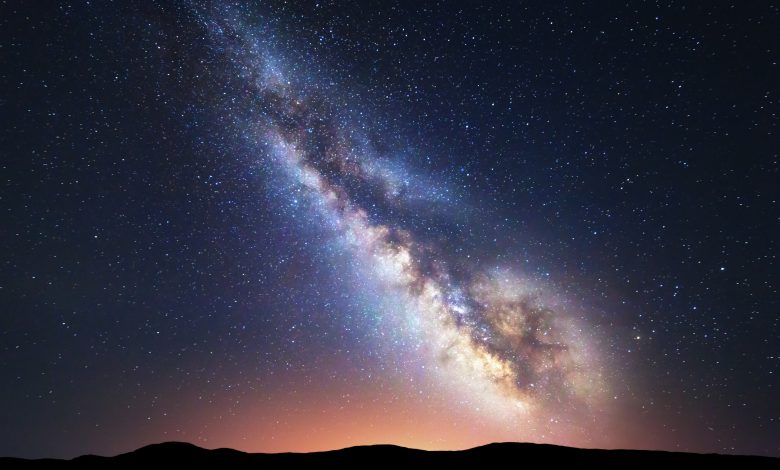
New Estimates Say 6 Billion Earth-Like Planets Exist in Our Milky Way Galaxy
تقديرات جديدة تشير إلى وجود 6 مليارات من الكواكب الشبيهة بالأرض في مجرتنا درب التبانة
Canadian astronomers have estimated that there are as many as 6 billion Earth-like planets in our own galaxy—some of which could harbor alien life.
The exciting new findings, which were published in The Astronomical Journal, were extrapolated from data from NASA’s now-retired Kepler telescope, which spent nearly a decade in space looking for exoplanets all across the galaxy.
To be considered an Earth-like planet, the world must be rocky, roughly the same size as Earth and should orbit in the habitable zone of a sun-like (G-type) star. At such a distance from a star, the planet might possess water in liquid form, which could potentially provide a habitable environment.
“My calculations place an upper limit of 0.18 Earth-like planets per G-type star,” the study’s co-author Michelle Kunimoto, a researcher at University of British Columbia (UBC), said in a release.
“Estimating how common different kinds of planets are around different stars can provide important constraints on planet formation and evolution theories, and help optimize future missions dedicated to finding exoplanets.”
According to UBC astronomer Jaymie Matthews, our Milky Way galaxy “has as many as 400 billion stars, with 7% of them being G-type.”
Some previous estimates regarding the number of Earth-like planets started as low as 0.02 potentially habitable worlds per sun-like star.
Generally, smaller distant worlds that resemble Earth are missed more often by telescopes and planet hunters, which means that a planet catalog represents only a small subset of the planets that are actually in orbit around the stars that are being studied.
The UBC team tapped into a technique known as “forward modeling” to overcome such obstacles.
“I started by simulating the full population of exoplanets around the stars Kepler searched,” Kunimoto said.
“I marked each planet as ‘detected’ or ‘missed’ depending on how likely it was my planet search algorithm would have found them. Then, I compared the detected planets to my actual catalog of planets. If the simulation produced a close match, then the initial population was likely a good representation of the actual population of planets orbiting those stars.”
Previously, Kunimoto searched archival data from 200,000 stars of the Kepler mission to discover 17 new exoplanets, in addition to recovering thousands of already-known planets.
These new findings come in the same week that astronomers at the University of Nottingham estimated that there could be 36 intelligent civilizations in our galaxy.
Source: yahoo
كشفت دراسة جديدة أنه قد يكون هناك ما يصل إلى 6 مليارات من الكواكب الشبيهة بالأرض في مجرتنا، ويمكنها أن تستضيف حياة غريبة. واستخدم علماء من جامعة كولومبيا البريطانية بيانات من مهمة كيبلر التابعة لوكالة ناسا، ويقترحون أنه قد يكون هناك ما يصل إلى كوكب واحد شبيه بالأرض، لكل 5 نجوم تشبه الشمس في درب التبانة.
وقال جيمي ماثيوز، معد الدراسة: “درب التبانة لديها ما يصل إلى 400 مليار نجم، 7% منها من النوع “جي”. وهذا يعني أن أقل من 6 مليارات نجم قد تحتوي على كواكب تشبه الأرض في مجرتنا”.
وأوضح فريق البحث أنه من المرجح عدم رصد الكواكب الشبيهة بالأرض، نظرا لأنها صغيرة جدا ومدارها بعيدا عن نجومها، ما يشير إلى أن “كتالوج الكوكب” الحالي قد يمثل مجموعة فرعية صغيرة من الكواكب في درب التبانة.
وقالت ميشيل كونيموتو، المشاركة في إعداد الدراسة: “بدأت بمحاكاة العدد الكامل من الكواكب الخارجية حول النجوم، التي بحث عنها كيبلر. ووضعت علامة على كل كوكب على أنه “مكتشف” أو “مفقود”، اعتمادا على مدى احتمالية العثور عليه من قبل خوارزمية بحث الكواكب. ثم قارنت الكواكب المكتشفة بالكتالوج الفعلي للكواكب. وإذا أسفرت المحاكاة عن تطابق وثيق، فمن المرجح أن يكون التمثيل الأولي جيدا للسكان الفعليين للكواكب، التي تدور حول تلك النجوم”.
وتأتي الدراسة بعد فترة وجيزة من حساب علماء من جامعة نوتنغهام، أنه يمكن أن يكون هناك أكثر من 30 حضارة نشطة في التواصل ضمن درب التبانة.
وقال أستاذ الفيزياء الفلكية كريستوفر كونسيليس، الذي قاد الدراسة: “يجب أن يكون هناك ما لا يقل عن بضع حضارات نشطة في مجرتنا على افتراض أن الحياة الذكية تستغرق خمسة مليارات سنة للتشكل على كواكب أخرى، كما هو الحال على الأرض”.
المصدر: al-sharq



